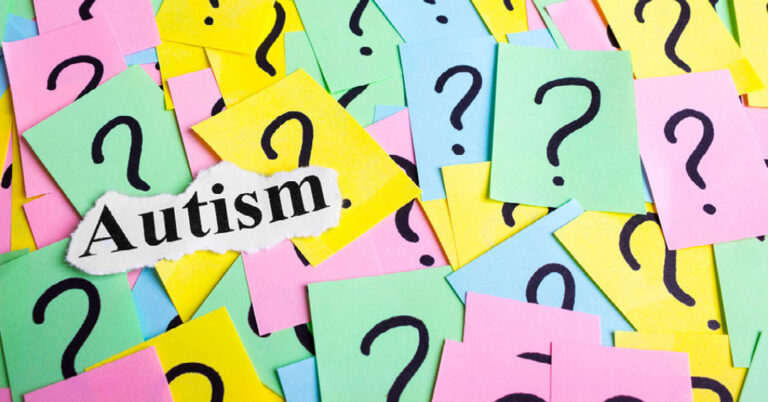If your child has recently received an Autism Spectrum Disorder (ASD) diagnosis, your pediatrician or case manager may have mentioned Applied Behavior Analysis (ABA) therapy, leaving you with many ABA questions. With a bit of research or a few seconds on Instagram or TikTok, you can learn about the principles of this behavioral science-based therapy.
But if you are left with more ABA questions, you have come to the right place! Below we explore the top ten most frequently asked ABA questions and explain how this behavioral approach works. Understanding ABA will help you decide if it is the right fit for your child and family.
1. Is ABA Effective?
Perhaps the most important of all ABA questions is about effectiveness. ABA therapy is the only evidence-based treatment approach for Autism Spectrum Disorder. It has passed scientific tests for effectiveness, quality, and usefulness.
Studies show that ABA is essential for improving communication skills and encouraging independence in children with autism. Through ABA therapy, children learn to access the world and potentially go through life with minimal support.
It is imperative to comprehend that not all ABA programs are the same, but each one will have a Board Certified Behavior Analyst (BCBA) assigned to your case. The BCBA will individualize a plan for your child’s specific needs and goals. The mission is to ensure your child has the same opportunities as their neurotypical peers. Most programs emphasize independence to accomplish this.
Here at ABA Centers of Florida, we value the process and the results. All the while, we recognize that your child’s journey will be unique and significant. We work to ensure your child develops and grows through a program that works with their needs and passions. We value that every child is individual, and no two cases will be the same. Expect therapy backed by data, science, and compassion.
2. Does ABA Therapy Cure Autism?
There is no cure for autism. Recognizing that no therapy will cure a child’s autism is essential. Still, ABA can help manage symptoms that make life and independence challenging. Parents should understand from the beginning of their child’s journey that autism is a complicated condition that manifests uniquely in everyone it touches.
There is no way to “get rid” of autism. We can only embrace it and empower the child to live the best life possible.
Science works to understand why some children have autism and others do not. Some evidence supports the idea that prenatal conditions, genetics, and other unknown variables may play a role. The mission of ABA is to help individuals with autism live profound and fulfilling lives full of adventure and satisfaction.
3. Is ABA Therapy a Form of Health Care?
Healthcare coverage for ABA is an important early ABA question to research. Yes, ABA therapy falls under the healthcare umbrella, even though it can also be educationally supportive. ABA therapy addresses behavioral health challenges in children diagnosed with autism. Studies show that early interventions lead to significant and measurable improvement in childhood development.
4. Does ABA Therapy Also Include Occupational and Speech Therapy?
ABA therapy is separate from occupational and speech therapy, but they are all complementary. The focus of ABA is influencing and understanding behavior. Speech primarily focuses on integrating and building effective language and communication skills. Occupational therapy works on physical rehabilitation and regaining physical capacity.
5. Is Applied Behavior Analysis Academic?
One of the more difficult ABA questions to answer has to do with learning. ABA therapy does not replace academics or school. While it can help with learning behaviors, it is not designed to replace school or academic classes.
ABA can help prepare a child with autism for school and the independence that it requires. In some cases, when ABA is implemented, a child can learn the skills necessary to fit into a classroom more organically.
Getting school-ready includes establishing joint attention, hygiene, self-care, self-awareness, and communication skills. Additionally, children will work on responsiveness, imitation, following directions, eating, and waiting. A great ABA program will evolve with your child. ABA will be an excellent support mechanism as your child’s needs change throughout their school career.
6. Do Parents Participate in ABA Therapy?
Absolutely! Parents play an essential role in ABA therapy. Observing sessions and participating whenever possible is a great way to learn about autism and your child’s development. Additionally, you can use anything you learn during the session in your daily routine.
7. Can ABA Therapy Reduce Specific Behaviors?
Probably the first ABA question most people ask is about reducing or eliminating unwanted behaviors. ABA strategies implement positive reinforcement and behavioral modification to reduce or eliminate destructive, challenging behaviors.
Unwanted behaviors can include aggression, self-injury, or other behaviors that hinder well-being or learning. However, it is vital to understand that ABA will not target every behavior your child exhibits. We do not aim to change the person but rather make life more accessible.
All behaviors serve a function, which is something you will come to learn the more time you spend with the BCBA and Registered Behavior Technician (RBT) assigned to your case. Understanding what triggers behaviors helps us to understand environmental factors within our control.
A special note on stimming: Stimming is often harmless and a way of self-soothing. Behavior therapists may introduce the child to alternative behaviors instead of stimming, but they do not aim to change the child. Instead, ABA helps them find ways to better participate in the world.
8. Does Insurance Cover ABA Therapy?
Every healthcare plan is different, so coverage will vary depending on the state. However, most states are required by law to offer a range of ABA therapy.
9. What is Positive Reinforcement? How Is It Used in ABA?
Positive reinforcement is a vital aspect of Applied Behavioral Analysis. This evidence-based behavioral approach analyzes behavior and reinforces behaviors we want the child to exhibit more often. Research depicts that reinforced behavior is most often repeated. Behaviors that are not reinforced often dissipate over time. RBTs and BCBAs will learn about your child’s interests and motivations when executing behavioral plans.
10. Is Applied Behavioral Analysis Only for Autism Spectrum Disorder?
The effectiveness of ABA is not limited to those with autism. Individuals of all ages and skills use the principles of ABA to accomplish and learn incredible things! Some significant companies even implement ABA with employees.
ABA Questions and Answers from ABA Centers of Florida
At ABA Centers of Florida, our BCBAs specialize in tailoring therapy for your child’s unique situation. Using the latest research, treatment methods, and continuing education, we work on helping your child develop the skills required to be more independent as they age out of services. Contact us for more information about our mission, services, and options for your family. We’ll be glad to answer all your ABA questions! Call (772) 773-1975 for a free consultation or contact us at: abacentersFL.com.








